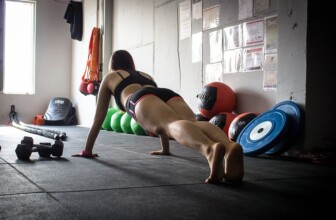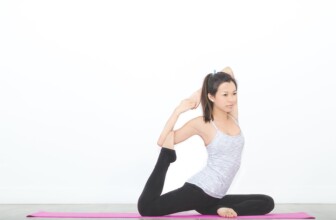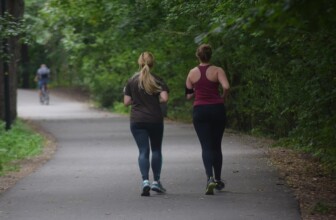Unlocking Your Potential: The Essential Guide to Stretching Exercises for Enhanced Flexibility
1. Introduction
Flexibility plays a crucial role in overall health, athletic performance, and daily activities. This guide aims to provide an in-depth look at stretching exercises, their benefits, types, and how to effectively incorporate them into your routine. Whether you are an athlete looking to enhance your performance or a sedentary individual seeking to improve your quality of life, understanding flexibility through stretching can unlock your true potential.
2. Benefits of Stretching
2.1 Physical Benefits
Stretching can improve range of motion, enhance athletic performance, and reduce the risk of injuries. Regular stretching can also alleviate muscle tension and improve posture.
2.2 Psychological Benefits
Engaging in stretching exercises can boost mood and reduce stress levels. The focus on breathing and mindfulness during stretching can lead to mental clarity.
2.3 Long-term Health Benefits
Incorporating stretching into your routine can lead to lower instances of chronic pain and can contribute to overall mobility in older age.
3. Types of Stretching
3.1 Static Stretching
Static stretching involves holding a stretch for a set period, typically 20-30 seconds. It is essential for improving flexibility and is best performed after exercising.
3.2 Dynamic Stretching
This type of stretching involves moving parts of your body through a range of motion, often mimicking the movements you will perform in your activity.
3.3 Proprioceptive Neuromuscular Facilitation (PNF)
PNF is a more advanced technique usually performed with a partner. It incorporates both stretching and contracting the muscles to improve flexibility.
3.4 Ballistic Stretching
Ballistic stretching involves bouncing into a stretch, which can be effective but may also lead to injury if not performed correctly.
4. How to Stretch Safely
4.1 Basic Guidelines
- Warm up your muscles before stretching.
- Do not bounce; instead, hold each stretch steadily.
- Never stretch to the point of pain.
- Focus on breathing and maintaining relaxation.
4.2 The Importance of Consistency
Flexibility is an adaptation of the muscles and connective tissues. Therefore, consistency in your stretching routine is crucial for long-term benefits.
5. Simple Stretching Routine for Beginners
Here’s a beginner-friendly routine that can help improve flexibility:
- Neck Stretches: Tilt your head side to side and hold for 15 seconds.
- Shoulder Stretches: Pull one arm across your chest and hold for 15 seconds, then switch.
- Hamstring Stretch: Sit on the floor and stretch toward your toes, holding for 20-30 seconds.
- Quadriceps Stretch: Stand up, grab your ankle, and pull it towards your glutes for 20-30 seconds.
- Child’s Pose: Kneel and stretch your arms forward, holding the position for 30 seconds.
6. Real-Life Examples and Case Studies
6.1 Athletes
Many professional athletes incorporate stretching routines into their training programs. An example is Olympic sprINTER Allyson Felix, who attributes part of her success to a disciplined flexibility routine. Her regimen includes various static and dynamic stretches tailored to her individual needs.
6.2 Everyday Individuals
Sarah, a 45-year-old office worker, struggled with back pain due to long hours at her desk. After incorporating a simple 10-minute stretching routine into her daily schedule, she experienced significant relief.
7. Questions and Answers (Q&A)
Q1: How often should I stretch?
A1: Ideally, stretching should be done at least three times a week. For optimal results, consider daily stretching, focusing on different muscle groups each day.
Q2: Can stretching prevent injuries?
A2: Yes, regular stretching can enhance flexibility, leading to a reduced risk of strains and sprains during physical activities.
Q3: What's the difference between warming up and stretching?
A3: Warming up usually involves light aerobic activity to increase muscle temperature, while stretching focuses on lengthening the muscles and increasing flexibility.
8. Frequently Asked Questions (FAQ)
Q1: Is it too late to become more flexible?
A1: No, it’s never too late to improve flexibility. With consistent practice, individuals of all ages can see progress.
Q2: Should I stretch before or after a workout?
A2: Dynamic stretches are effective before a workout to prepare your muscles, while static stretches are best performed after, during the cool-down.
Q3: Can I stretch every day?
A3: Yes, stretching can be performed daily. Just be mindful not to overstretch any specific muscle group.
Resources
| Source | Description | Link |
|---|---|---|
| American Council on Exercise | Comprehensive guidelines on stretching and flexibility. | acefitness.org |
| National Academy of Sports Medicine | Educational resources on fitness and flexibility. | nasm.org |
| Stretching for Dummies | A beginner's guide to proper stretching techniques. | dummies.com |
| YouTube Fitness Channels | Visual guidance on stretching routines. | youtube.com |
| Yoga Journal | In-depth articles on yoga and stretching practices. | yogajournal.com |
Conclusion
In conclusion, enhancing flexibility through a structured stretching routine can lead to significant benefits in both physical health and mental well-being. The key takeaways from this guide include understanding the importance of flexibility, the various types of stretching, and establishing safe, effective stretching practices. As you integrate stretching into your routine, remember that consistency is key to unlocking your potential.
Future trends may include the use of technology, like apps and virtual coaching, to provide personalized stretching routines. Areas for further study may focus on the integration of flexibility training in various sports disciplines and its long-term effects on mobility as we age.
Disclaimer
This article is intended for informational purposes only and should not be considered medical advice. Always consult a healthcare provider before starting any new exercise regimen, particularly if you have pre-existing health conditions or concerns.










